
McArthurGlen – West Midlands
Plants are an essential part of the McArthurglen sites and help us all to feel better and be happier.
Urban Planters and McArthurGlen wanted to help share some informative and easy to understand details of some of the plants we use around the centre you are visiting today. Looking at the plants around you, can you identify which location you are in?
If you have any questions about the plants on site please visit the McArthurGlen Guest Services and they will be more than happy to assist you. Enjoy the planting and thank you for taking the time to learn about our plants.
Location 1

Buxus sempervirens
Plant info: Buxus sempervirens is a vigorous evergreen / small tree. In this instance the topiary Buxus has a smart spiral finish after trimming.
Fact: They are extremely easy to maintain and can be pruned into different structured shapes to create a fantastic feature in public areas.
Native to: Southern England, Northern Morocco.
Location 2
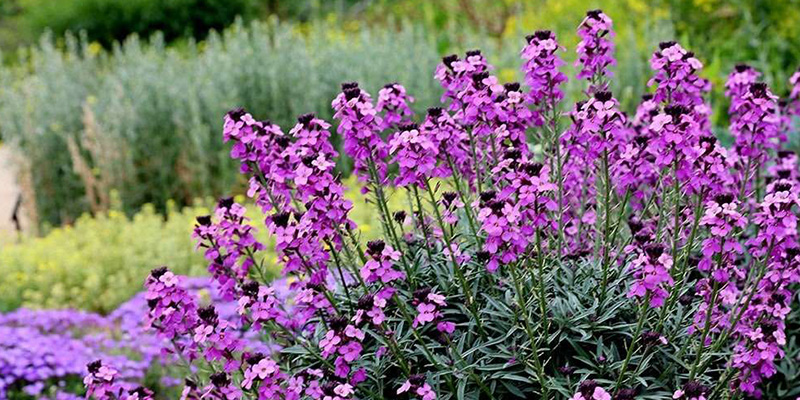
Erysimum Bowles Mauve
Plant info: Beautiful and floriferous perennials which have flowers appearing on tall spires for months on end enjoy dappled shade.
Fact: The nectar rich flowers of the Erysimum attract both butterflies and bees, increasing biodiversity.
Native to: Southern Europe.
Location 3
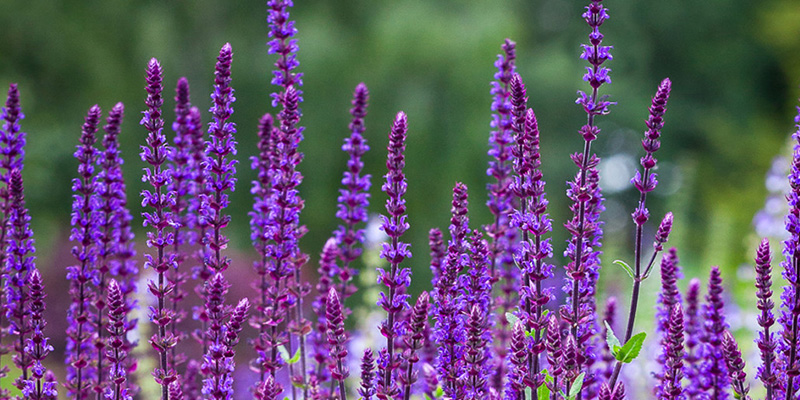
Salvia nemorosa
Plant info: Salvias thrive in a sunny sheltered spots, they produce summer-long displays of spiky, nectar-rich flowers.
Fact: The species name ‘nemorosa’ means ‘of woods’, which is where the plant is typically found.
Native to: Central Europe and Western Asia.
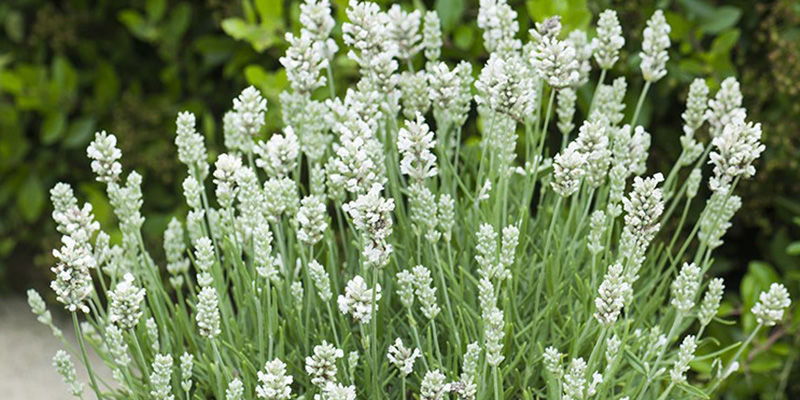
Lavender ‘Beezee White‘
Plant info: Lavender ‘Beezee White’ is compact and makes a lovely low informal hedge or path edging with a wonderful fragrance.
Fact: It is a nectar haven for bees as it bears dense spikes of pure white flowers.
Native to: Southern Europe and Middle East.
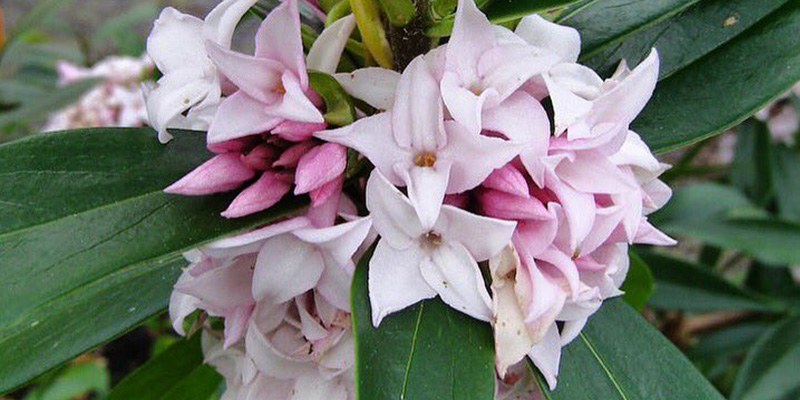
Daphne ‘Perfume Princess‘
Plant info: A compact and strong growing plant with lots of showy flowers and a lovely scent. Flowers between March and April.
Fact: Daphne Perfume Princess is a cross between Daphne bholua and Daphne odora.
Native to: New Zealand.
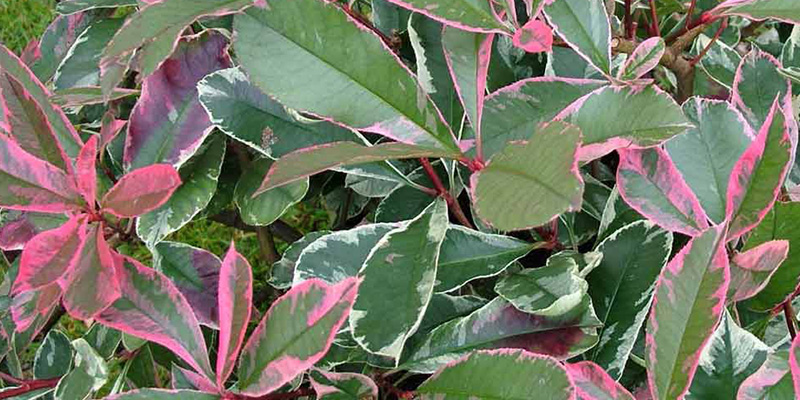
Photinia Pink Marble
Plant info: A variation of Photinia Red Robin with red and pink leaves. It is an attractive low-maintenance shrub.
Fact: Photinia Pink Marble can also make a good garden hedge or screening plant with beautiful white flower sprays which bloom in April and May.
Native to: New Zealand.
Location 4
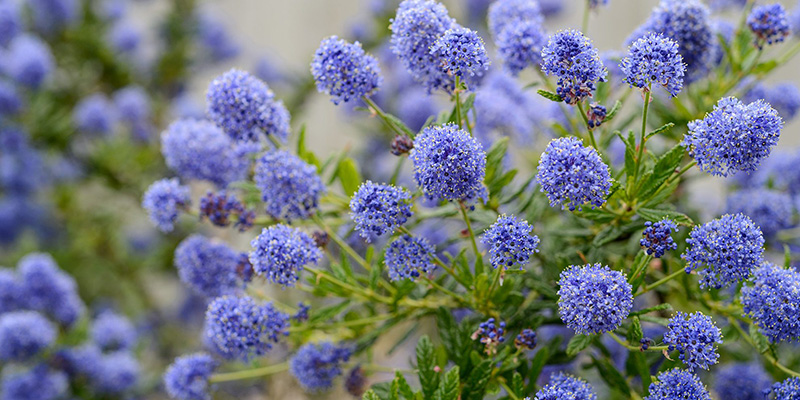
Ceanothus ‘Blue Mound‘
Plant info: A bushy medium-sized evergreen shrub with compact heads of bright blue flowers and glossy oblong-ovate leaves.
Fact: Also known as ‘Californian lilac’ or ‘Soap Bush’.
Native to: North America.
Location 5

Erysimum Bowles Mauve
Plant info: Beautiful and floriferous perennials which have flowers appearing on tall spires for months on end enjoy dappled shade.
Fact: The nectar rich flowers of the Erysimum attract both butterflies and bees, increasing biodiversity.
Native to: Southern Europe.

Vinca Minor aka Periwinkles
Plant info: Tough, low-maintenance, and pest-free, Vinca minor (commonly known as periwinkle) has pretty broadleaf foliage and flowers that thrive in the sun or shade.
Fact: The vinca minor vine can put out different colours of flowers in spring including; blue, lavender, purple or white.
Native to: Europe
Location 7

Photinia Pink Marble
Plant info: A variation of Photinia Red Robin with red and pink leaves. It is an attractive low-maintenance shrub.
Fact: Photinia Pink Marble can also make a good garden hedge or screening plant with beautiful white flower sprays which bloom in April and May.
Native to: New Zealand.
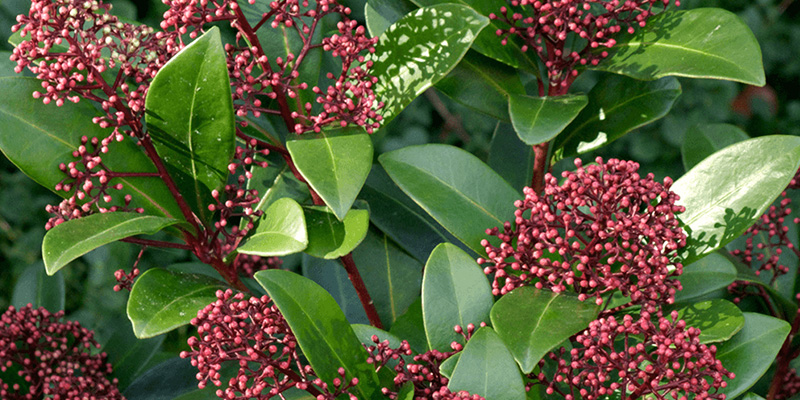
Skimmia japonica ‘Rubella‘
Plant info: ‘Rubella’ is an evergreen ornamental shrub that adds a splash of warm colour to the winter garden before blooming in spring.
Fact: It’s a little sensitive to light, so, if possible, keep it out of the full sun, as this can cause the leaves to turn yellow.
Native to: Japan, China and Southeast Asia.

Daphne ‘Perfume Princess‘
Plant info: A compact and strong growing plant with lots of showy flowers and a lovely scent. Flowers between March and April.
Fact: Daphne Perfume Princess is a cross between Daphne bholua and Daphne odora.
Native to: New Zealand.
Location 8

Heuchera Micrantha ‘Palace purple’
Plant info: A compact, mound forming perennial boasting decorative evergreen rosettes of round, scalloped, reddish leaves. It is easy to grow and requires little maintenance.
Fact: Butterflies are attracted to it, but often ignored by deer.
Native to: Western North America.
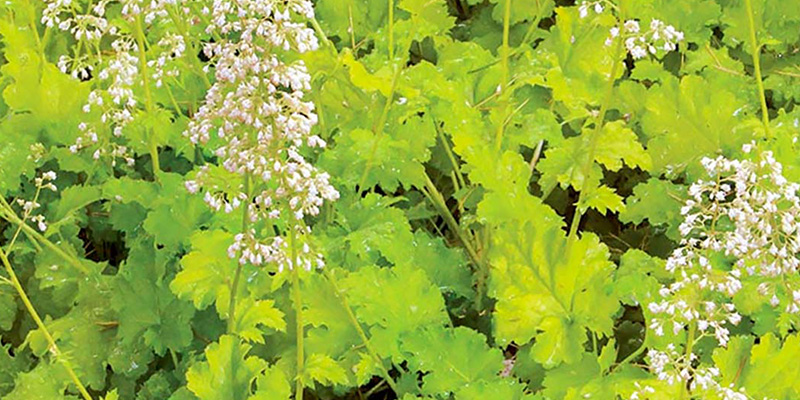
Heuchera Lime Marmalade
Plant info: Vigorous and showy plants with bright lime green leaves which carry their colour throughout the whole of growing season.
Fact: Butterflies are extremely attracted to ‘Lime Marmalade’ increasing biodiversity at the site. Also, pest and disease free.
Native to: Woodlands of North America.
Location 27

Ceanothus ‘Blue Mound‘
Plant info: A bushy medium-sized evergreen shrub with compact heads of bright blue flowers and glossy oblong-ovate leaves.
Fact: Also known as ‘Californian lilac’ or ‘Soap Bush’.
Native to: North America.
Location 28

Amelanchier tree
Plant info: Spring blossoming trees with autumn colour perfect for small areas. Provides edible black berries late summer and providing food for our wildlife increasing biodiversity.
Fact: Also known as Juneberry tree,
Native to: North America.
Location 29 & 31

Hebe
Plant info: Bushy evergreen shrubs with purple, pink or white flowers in summer and sometimes in spring and autumn too. The leaves can often be variegated and tinged pink.
Fact: Hebe with small, scale-like leaves are called ‘Whipcord’ Hebe. Usually dense and compact, they are tougher than Hebe with larger leaves.
Native to: Australia and South America
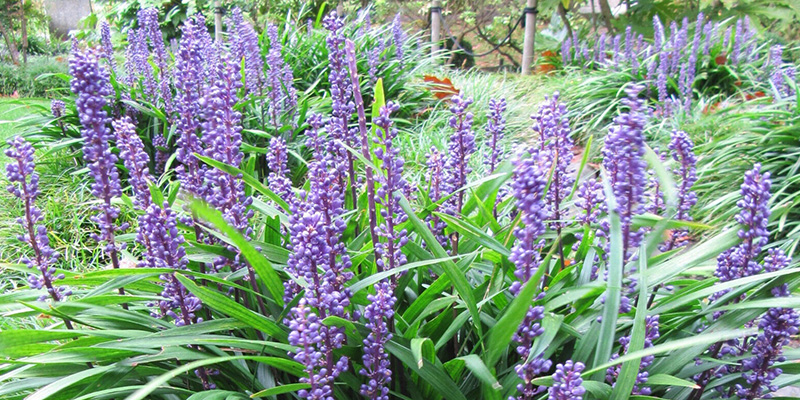
Liriope muscari
Plant info: Grow in light, moderately fertile. Evergreen forming a dense clump of narrow arching dark green strappy leaves. In late summer, small lilac flowers appear.
Fact: A trouble free plant; deer and rabbit resistant, disease and pest free.
Native to: Asia.

Trailing petunia ‘Purple Wave’
Plant info: It is a spreading annual or perennial boasting masses of bright magenta-purple flowers from late spring to the first frost, blooming freely all season.
Fact: They produce a beautiful display throughout summer which attracts pollinators.
Native to: UK.
Location 30

Carex
Plant info: Grown mainly for their typically evergreen leaves, which combine well with other ornamental grasses. The leaves can be pale to dark green, bright yellowish-green or bronze-purple.
Fact: What distinguishes a sedge from a grass is the flowering stems, which are triangular in cross section and solid, rather than round and hollow.
Native to: Carex pendula is Native to the UK but other varieties can be native to Asia.

Erysimum Bowles Mauve
Plant info: Beautiful and floriferous perennials which have flowers appearing on tall spires for months on end enjoy dappled shade.
Fact: The nectar rich flowers of the Erysimum attract both butterflies and bees, increasing biodiversity.
Native to: Southern Europe.

Skimmia japonica ‘Rubella‘
Plant info: ‘Rubella’ is an evergreen ornamental shrub that adds a splash of warm colour to the winter garden before blooming in spring.
Fact: It’s a little sensitive to light, so, if possible, keep it out of the full sun, as this can cause the leaves to turn yellow.
Native to: Japan, China and Southeast Asia.
Location 32

Ceanothus ‘Blue Mound‘
Plant info: A bushy medium-sized evergreen shrub with compact heads of bright blue flowers and glossy oblong-ovate leaves.
Fact: Also known as ‘Californian lilac’ or ‘Soap Bush’.
Native to: North America.

Prunus serrulata (Cherry Blossom)
Plant info: Most cherry flowers are light pink to white but there are also cherry trees with dark pink, yellow or green blossoms. Most are fragrant and exude a pleasing scent of crushed almonds.
Fact: Cherry blossoms have from 5 to over 300 petals.
Native to: A variety called Prunus avium is native to the UK. Although blossom trees are popularly associated with Japan.
Location 33 & 35

Hebe
Plant info: Bushy evergreen shrubs with purple, pink or white flowers in summer and sometimes in spring and autumn too. The leaves can often be variegated and tinged pink.
Fact: Hebe with small, scale-like leaves are called ‘Whipcord’ Hebe. Usually dense and compact, they are tougher than Hebe with larger leaves.
Native to: Australia and South America

Erysimum Bowles Mauve
Plant info: Beautiful and floriferous perennials which have flowers appearing on tall spires for months on end enjoy dappled shade.
Fact: The nectar rich flowers of the Erysimum attract both butterflies and bees, increasing biodiversity.
Native to: Southern Europe.

Trailing petunia ‘Purple Wave’
Plant info: It is a spreading annual or perennial boasting masses of bright magenta-purple flowers from late spring to the first frost, blooming freely all season.
Fact: They produce a beautiful display throughout summer which attracts pollinators.
Native to: UK.
Location 34

Carex
Plant info: Grown mainly for their typically evergreen leaves, which combine well with other ornamental grasses. The leaves can be pale to dark green, bright yellowish-green or bronze-purple.
Fact: What distinguishes a sedge from a grass is the flowering stems, which are triangular in cross section and solid, rather than round and hollow.
Native to: Carex pendula is Native to the UK but other varieties can be native to Asia.

Berberis thunbergii
Plant info: Berberis thunbergii are deciduous (drop their leaves in winter) shrubs which provide not only highly coloured leaves in autumn but often berries which last well into winter.
Fact: The flowers are normally yellow, and they appear in mid to late spring-time lasting for about a month. Each flower is small, but the overall appearance of a Berberis full flower is impressive.
Native to: Japan and Eastern Asia.

Salvia nemorosa
Plant info: Salvias thrive in a sunny sheltered spots, they produce summer-long displays of spiky, nectar-rich flowers.
Fact: The species name ‘nemorosa’ means ‘of woods’, which is where the plant is typically found.
Native to: Central Europe and Western Asia.